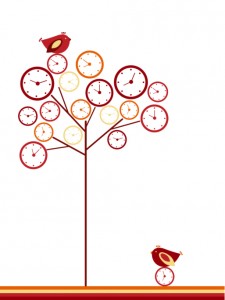Taken to Heart (Part 4)
By Asher Crispe: October 4, 2012: Category Decoding the Tradition, Inspirations
Emotional Time Binding
 Time changes everything. How can we retain our identity when we appear so different in the course of time? What connects the person that I am today with the person I will be tomorrow? More particularly, how will the feelings that I have today link to the feelings that I will have in the future. Since I find my emotions to vary in type and intensity, I may wonder how all the feelings can be unified. And if there is a temporal unity to emotion, how is it constituted? The time-image of the heart forms the fourth modality of our existential emotions which appears in the context of Sukkot and revolves around the mystical insights into the Etrog (citron).
Time changes everything. How can we retain our identity when we appear so different in the course of time? What connects the person that I am today with the person I will be tomorrow? More particularly, how will the feelings that I have today link to the feelings that I will have in the future. Since I find my emotions to vary in type and intensity, I may wonder how all the feelings can be unified. And if there is a temporal unity to emotion, how is it constituted? The time-image of the heart forms the fourth modality of our existential emotions which appears in the context of Sukkot and revolves around the mystical insights into the Etrog (citron).
The Sages of the Talmud (Sukkot 35a) relate that this fruit is chosen for a number of reasons. For starters, the Torah (Leviticus 23:40) refers to it as “the fruit of the beautiful tree (Etrog).” In the Talmud deconstruction of this characterization, hyper-focus is placed on the word hadar which in the above translation is read as ‘beauty.’ However, the Talmud also rereads the same word with a new emphasis, breaking it into ha-dar or ‘that which dwells’ (think of duration, endurance etc…). Why is it the fruit that endures? Most fruits are sessional. Poetically speaking, seasonal changes signify our emotional transformations. Therefore, the uniqueness of the Etrog stems from its growth in all seasons. Its life-span physically binds these times (and the feelings of these times) together.
As the object of that embodies transtemporal emotion, the Etrog suggests to us that in order to feel something completely, one must feel it at all times–that the feeling must carry through all times. Enduring emotion is not only immune to the potential damage of the changing times, it actually grows through all the seasons. Shifting temporal environments enriches emotions rather than terminates them.
Another cryptic rabbinic interpretation can now also be decoded. The unicity of the fruit lies in the fact that it tastes identical with the wood of the tree. The commentary of Rashi quotes this, seizing upon the words pri etz or ‘fruit tree’ and reading them schematically as ‘fruit’ = ‘tree/wood’. What is the big deal about the tree and its fruit having the same taste? In the Midrash we find that all of the trees of the primordial Edenic garden had this quality. The entire tree was fruit. After eating from the Tree of Knowledge however, a schism occurred. No longer would all trees be recognized as fruit trees and even those that were fruit trees would not have their wood taste like their fruit unless it happened to be a special exception like the Citron (Etrog) tree. From this we can surmise that the Etrog represents a trace of our pre-history. History itself needs an experiential breaking between tree and fruit, but our original state (and one that will be restored in the future according to the Sages) maintained no such bifurcation.
As a symbol, trees are complex systems. Today, in a world of information ontologies, we think more and more about the paths and files of an enormous data tree. The fruit of this figurative tree denotes its self-replication capacity or recursive function. An information system spawning more information, transplanting that information to a new context, is truly fruitful. Ta’am or ‘taste’ in Hebrew also means ‘meaning.’ Thus, for a fruit tree to have a copy of itself hold the same significance as itself, it would have to have consistent content or the same meaning. Pushing forward into the future by means of successive iterations of the tree/system whereby the genomics are the same, ensures the enduring qualities of that tree/system. When applied to emotion, we would have to say that our feelings endure in passive memory and can be retrieved in active memory. My emotion can be re-lived and copied over and over. This is the temporalization of emotion.
The Etrog illustrates our capacity to feel both the being of time and the time of being. When that the Talmud states that it ‘dwells on its tree from year to year’ we should point out that the word year (shanah) also means change (shenui). Couple this with the Midrashic description of the Etrog resembling the heart in its physical form and we can assert that we are dealing with emotions that withstand the test of time and even grow with time. The hidur or ‘beauty’ of its resilience rests on blending and harmonizing the good times with the bad. It is a fruit for all occasions, a heart that weathers all that life brings.
Finally, another esoteric dimension is expressed in the word hadar (dwelling-beauty). The Arizal explains Creation as an ongoing struggle between chaos and order. The world of Chaos is personified by eight Edomite kings that are mentioned in the Torah. About each one of the first seven, the Torah relates that he ruled and then he died. When speaking of the eighth king, whose name is Hadar, we find no mention of him dying in the Torah. Moreover, the mystics explain that his rule was not the government of a solitary individual whose time would come and go. He endures in his role and serves as the beginning of a rectified world order by virtue of the fact that he was married. While none of the other kings were said to have wives, Hadar’s wife is recorded as Meheitavel. According to Lurianic teachings, the secret of Meheitavel [מהיטבאל] is that it equals 97 in gematria which is the equivalent of the Hebrew word of ‘time’ or zeman [זמן]. ‘Hadar’ can also means a cycle, iteration or edition (mahadorah). Thus, together as a marriage pair they imply something like a ‘time cycle’ reminiscent of our early example of the all-seasoned fruit of the Etrog.
Stabilizing the world of chaos–which cannot endure, but ‘dies’ succumbing to the erosion of time or the effects of entropy–entails developing a stable relationship or creative pairing capable of reproduction. This takes us to the last letter of the Tetragrammaton–the final Hei. In Kabbalah, this letter relates to the aspect of malchut or ‘kingdom’ (and is also understood to be the origin of time). All kingdoms are faced with constant challenges from within and without that can jeopardize their existence. Governments rise and fall. Only a stable government can survive the tests of time. To accomplish this the ruler or king must be married to time itself. To be in touch with time demands that a governor sense all the changes that time brings, to feel the pulse of the day, the exigencies of the hour, the play by play of the moment and respond appropriately.
 How we conduct ourselves and interact with external reality necessitates taking time into consideration. One must acquire a feeling for time (or the times) in order to ride out and respond to all of the changes that time will bring. In the world of Rectification, each time-change produces a new feeling in me and I am likewise sensitive to the times. For this, I must have an Etrog for a heart.
How we conduct ourselves and interact with external reality necessitates taking time into consideration. One must acquire a feeling for time (or the times) in order to ride out and respond to all of the changes that time will bring. In the world of Rectification, each time-change produces a new feeling in me and I am likewise sensitive to the times. For this, I must have an Etrog for a heart.























;)
;)
;)
;)
;)
;)
;)
;)
;)
;)
